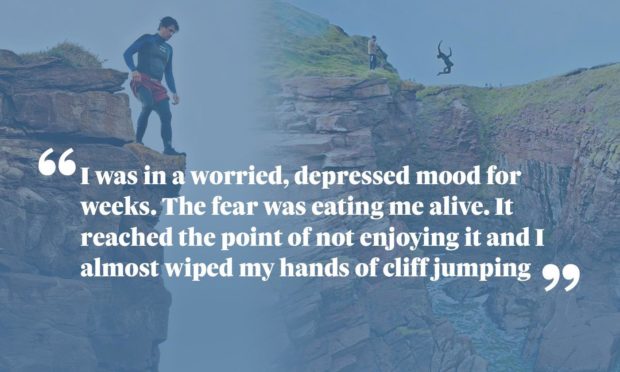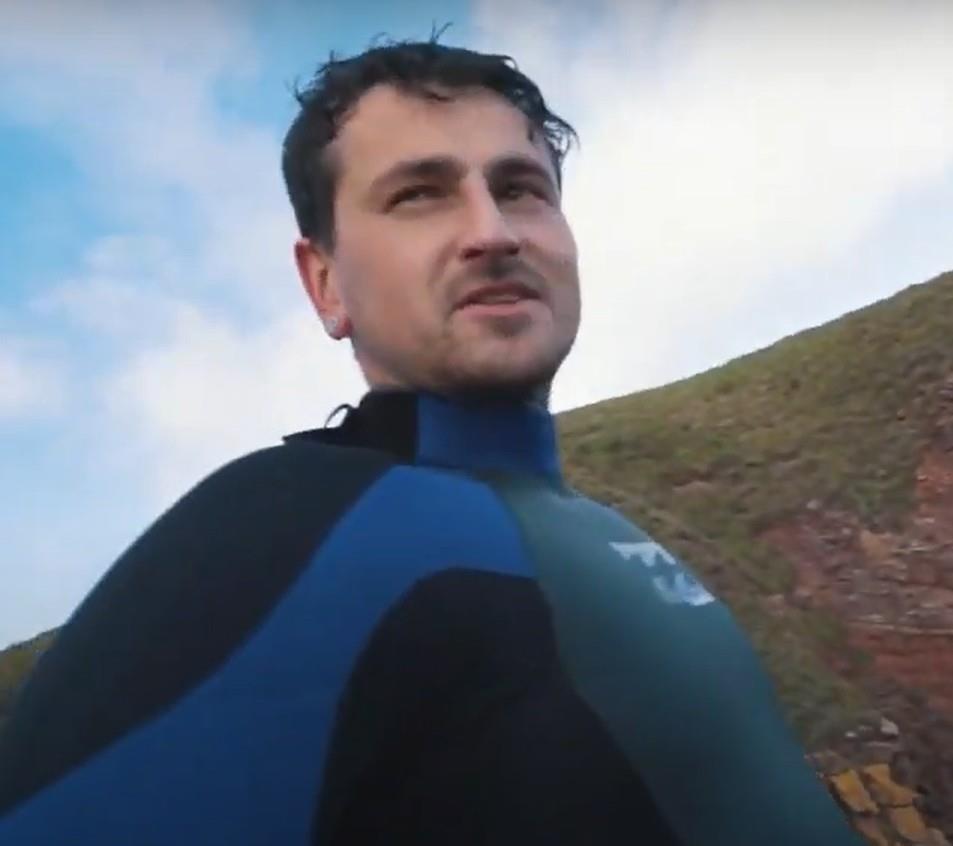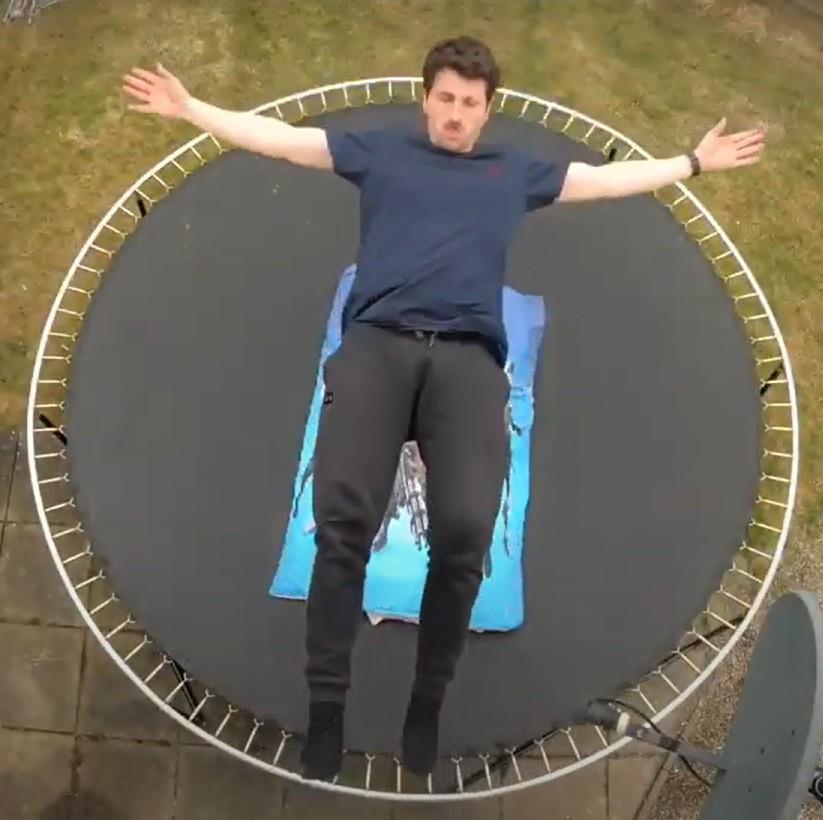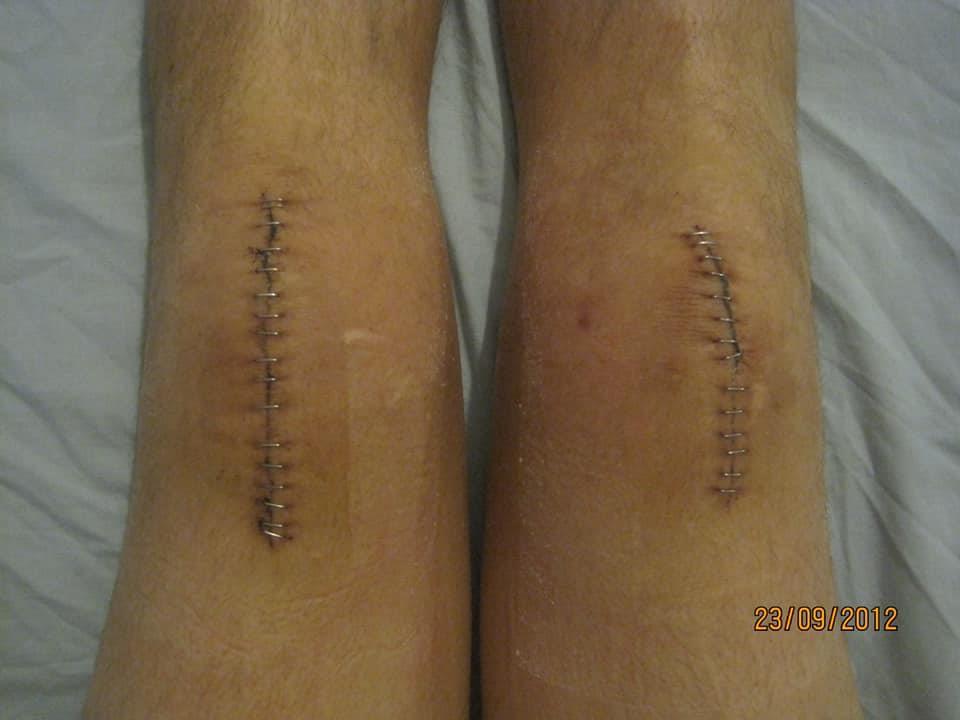The sight of Lee Mitchell somersaulting into the North Sea from a height of more than 50 feet can induce a knot in the stomach.
Lee’s controversial jumps from the Arbroath cliffs – criticised by the RNLI for being dangerous – can be seen online thanks to the wonders of modern filming equipment.
“He’s got more balls than brains,” claims one onlooker after seeing the Arbroath man perform an incredulous double flip into the sea in May 2020.
Lee is aware that people think he is crazy for his adrenaline-fuelled hobby. And he certainly looks fearless.
But behind the daredevil facade of a man whose cliff jumping group has more than 1,200 Facebook likes is a mortal human who has had to confront months of fear and anxiety to maintain a pursuit he enjoys above all others.
This is because Lee almost came a cropper in a jump that did not quite go to plan.
‘It was a wake-up call telling me I am only human’
In June 2020 he undertook a 55-foot double backflip from a spot known as the ‘diving board’.
“It’s a horrible jump. It’s not a clean jump. You turn your back and can’t see behind you,” he says.
“A slab of rock protrudes the edge of the cliff. It’s everyone’s scariest jump because you can’t see the sides.”
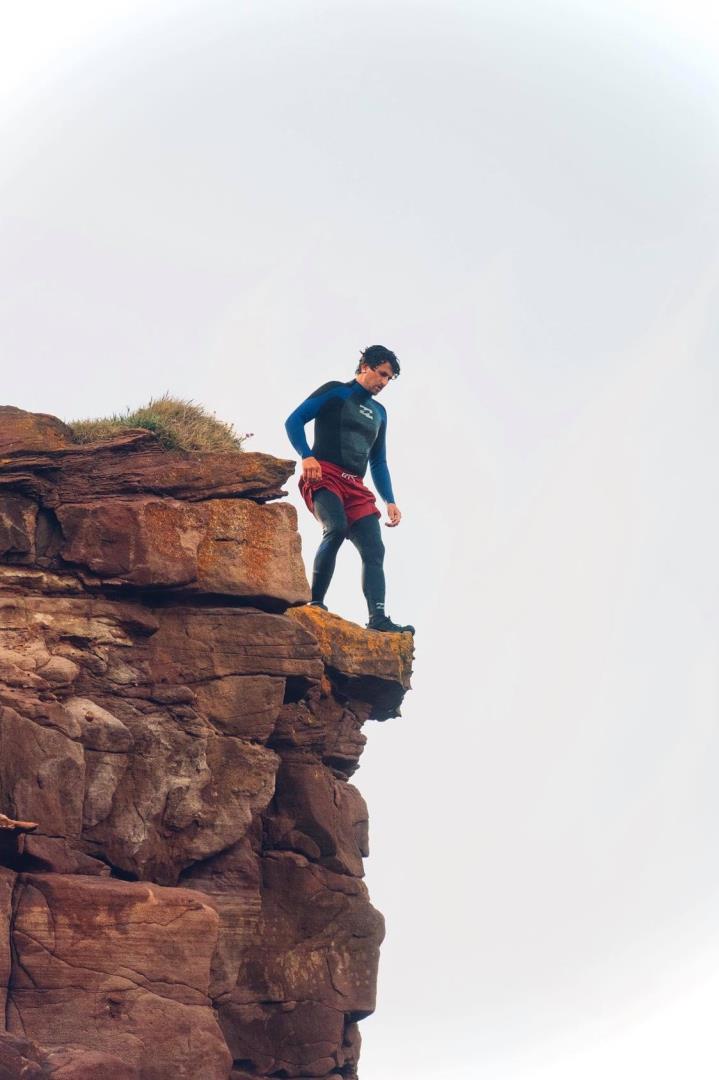
The incident had far-reaching consequences for Lee, who only began jumping into the sea from the cliffs towards the end of 2019.
“It was a close call and rocked me mentally,” he says. “I did a trick and landed awkwardly. I was in a worried, depressed mood for weeks.
“The fear was eating me alive. It reached the point of not enjoying it and I almost wiped my hands of cliff jumping.
“It was a wake-up call telling me I am only human.
“I didn’t jump again for six months and during that break I got the fear and had to relearn it.
“During this six months I understood just how extreme, scary and dangerous the stuff we do is. That was an eye opener for me because you just take it for granted.
“You don’t realise how extreme it actually is to a normal person.”
‘I had deep breaths’
It wasn’t until his 29th birthday on December 30 – six months later – that Lee felt he could do another jump.
“It was redemption,” he says. “When I stood on top of the cliff I had deep breaths. You never forget that close one.
“You have to be physically fit but the mental side is the hardest part of it.”
‘I used to jump in Arbroath harbour’
Lee’s move to cliff jumping in late 2019 marked the next stage of a journey that began as a child on his summer holidays.
When parents Brian, 51, and Janey, 52, took Lee and younger brother Jed, 27, to various Canary Islands he would spend hours on the trampoline practising his moves.
“I did back and front flips and then took it to another level,” he says.
One of those levels was the diving board at Dundee’s Olympia leisure centre, where jumps from 18 feet were not uncommon.
Another one came at Lunan Bay, where Lee’s parents had a summer hut. He would use the dunes as his training ground for backflips.
“Once I mastered back flips I used to jump in Arbroath harbour.
“Then you would start adding things on and doing 360s,” he says.
‘The doctor said I’d be lucky to walk again’
Lee suffered a major physical setback at the age of 22 that could have left him unable to walk again.
He was relaxing in the Station Bar in Arbroath when one of his friends tried a backflip as a party trick.
“I wanted to show him how he was doing it wrong so we cleared the space and I tried a half-hearted backflip.”
The extent of Lee’s mishap was only discovered when he woke up the following morning with “knees like bowling balls”.
He was taken to hospital where it was established that he had split both of his kneecaps.
A surgeon wired his knees together to provide stability but the outlook was gloomy.
“In the hospital bed the doctor said I’d be lucky to walk again,” Lee recalls. “I remember bursting into tears.
“I had such an active lifestyle and thought it was the end of that. At the time I couldn’t be positive and see the light.”
‘I have got a second lease of life’
But Lee was determined to recover and underwent intensive physiotherapy while trying to swim and cycle.
It worked a treat. He is now able to lead a normal life other than not being able to run long distances or squat heavily.
“I have got a second lease of life,” he says.
“What I went through has inspired me to do what I’m doing now.”
‘It’s the cheapest adrenaline hit you can get’
Discovering a UK cliff jumping group on Facebook was a game-changing moment for Lee, who works as a joiner for his dad’s company.
“I watched some videos and it clicked to me that this was one sport where you can outdo yourself,” he recalls.
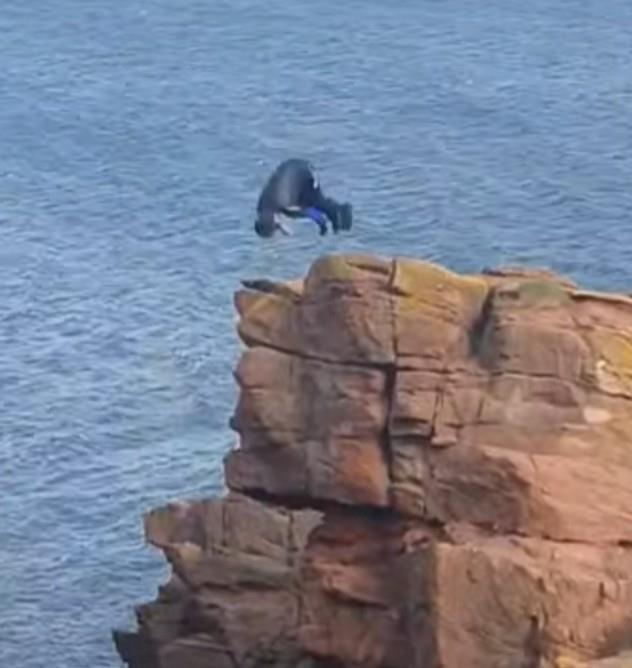
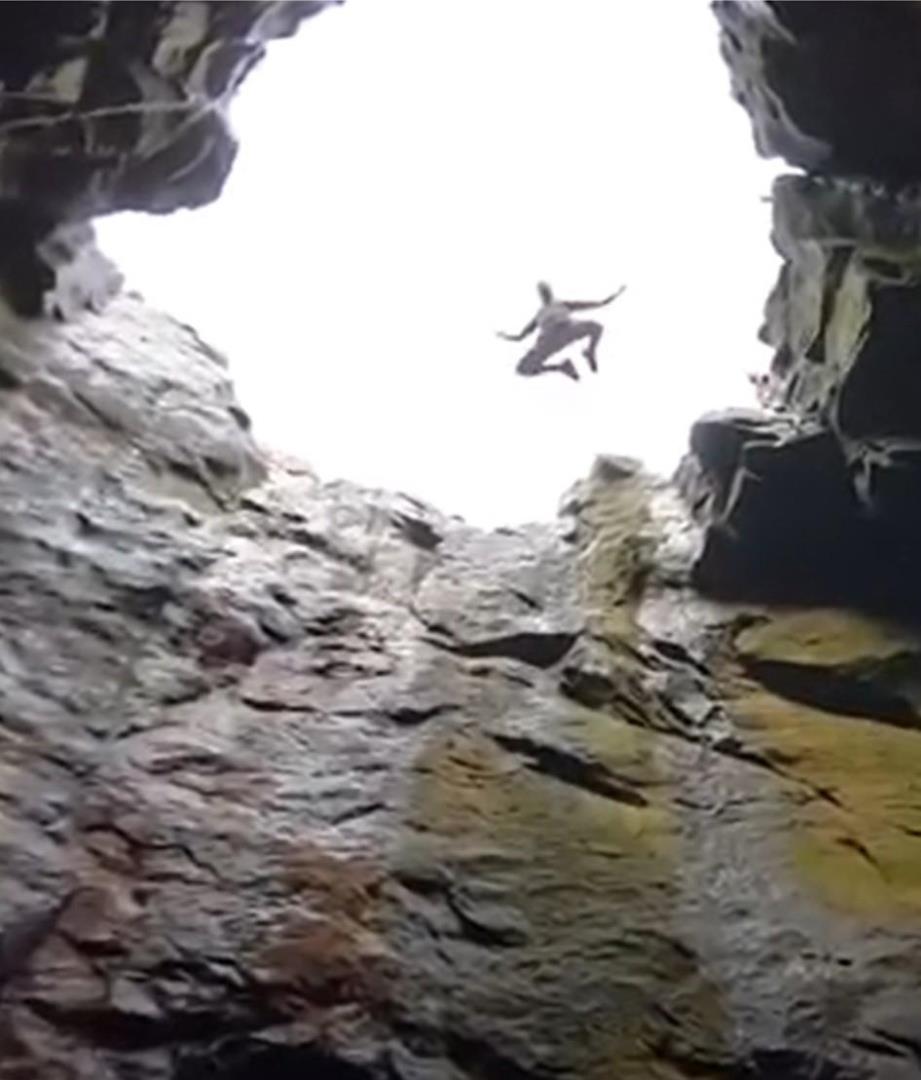
“With biking, for example, there comes a point where you need better equipment.
“But with cliff jumping you can do three flips, or more, or change the type of jump.
“There are no boundaries. Once you get good at one thing there’s always something else you can do.
“It’s a cheap and cheerful sport. It’s the cheapest adrenaline hit you can get. Some people jump 10ft, some jump 50ft. It’s just a matter of taking a step off a cliff.
“At Arbroath there are a lot of cliffs, from 5ft to 100ft, so there is something for everyone.”
‘People will call us idiots and stupid’
Lee set up his own Facebook group and began organising events, attracting people from across the UK.
He says there only a few dozen from the group who actually turn up and join him on the jumps.
“People will call us idiots and stupid and make out we are turning up at a cliff and throwing ourselves off it but they don’t know the preparation we go through.”
Never jumps alone
Lee lists the following safety measures:
- Jumps at high tide only
- Never jumps alone
- Goes in a kayak to check areas at low tide to see what rocks are visible that may be hiding at high tide
- Uses a sonar/fish finder and tape measure to gain an impression of what is underneath the water and to illustrate its depth
- Uses a big stick to have a poke around the water to see if it is clear
- Swims down with scuba gear/snorkel to visually inspect the area
- Talks to other experienced people including kayakers, divers, fishermen and older generations
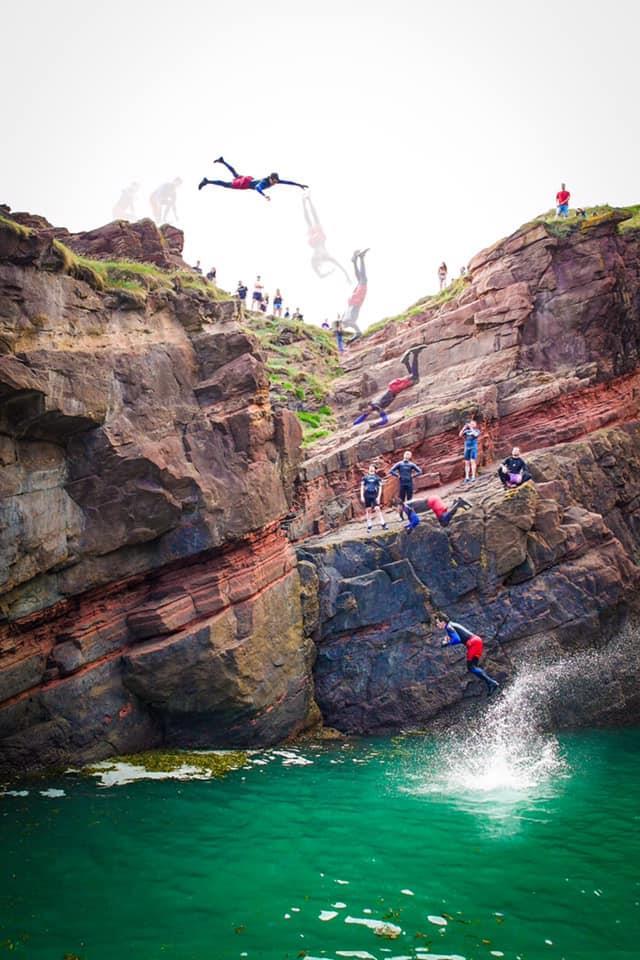
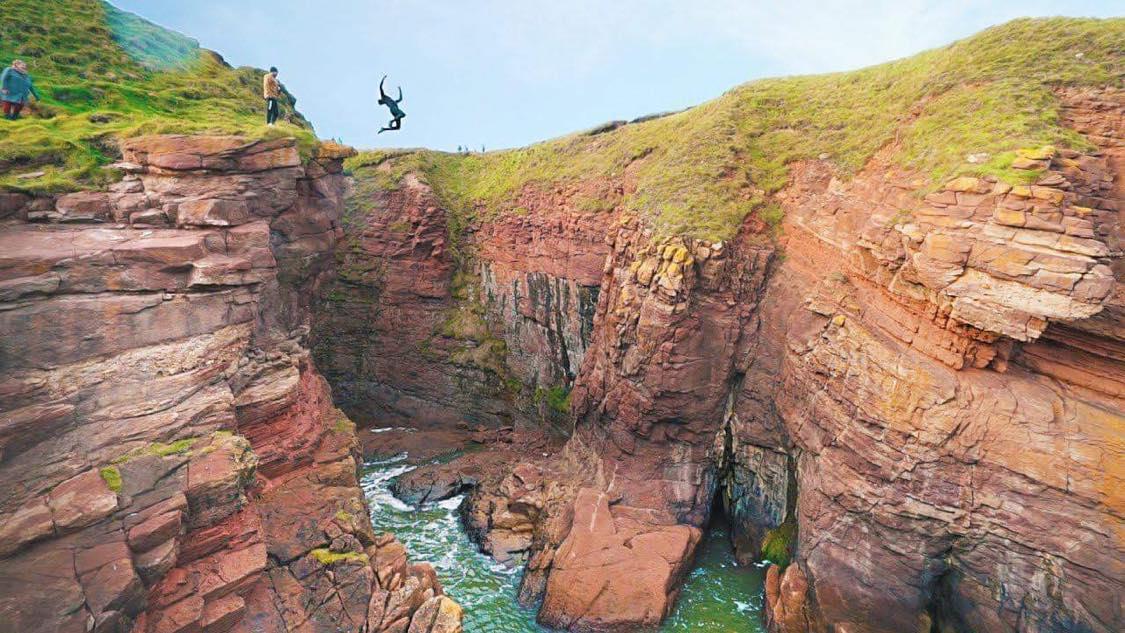
Lee says: “This is just to make sure the area is clear. There are more safety measures if the jump is more dangerous than others, or if someone is trying a new trick for the first time. There is always someone in the water.”
‘The activity is inherently dangerous’
Thankfully, neither Lee nor any members of his group have needed to be rescued by the RNLI.
But the organisation does not approve of his activities, according to its statement.
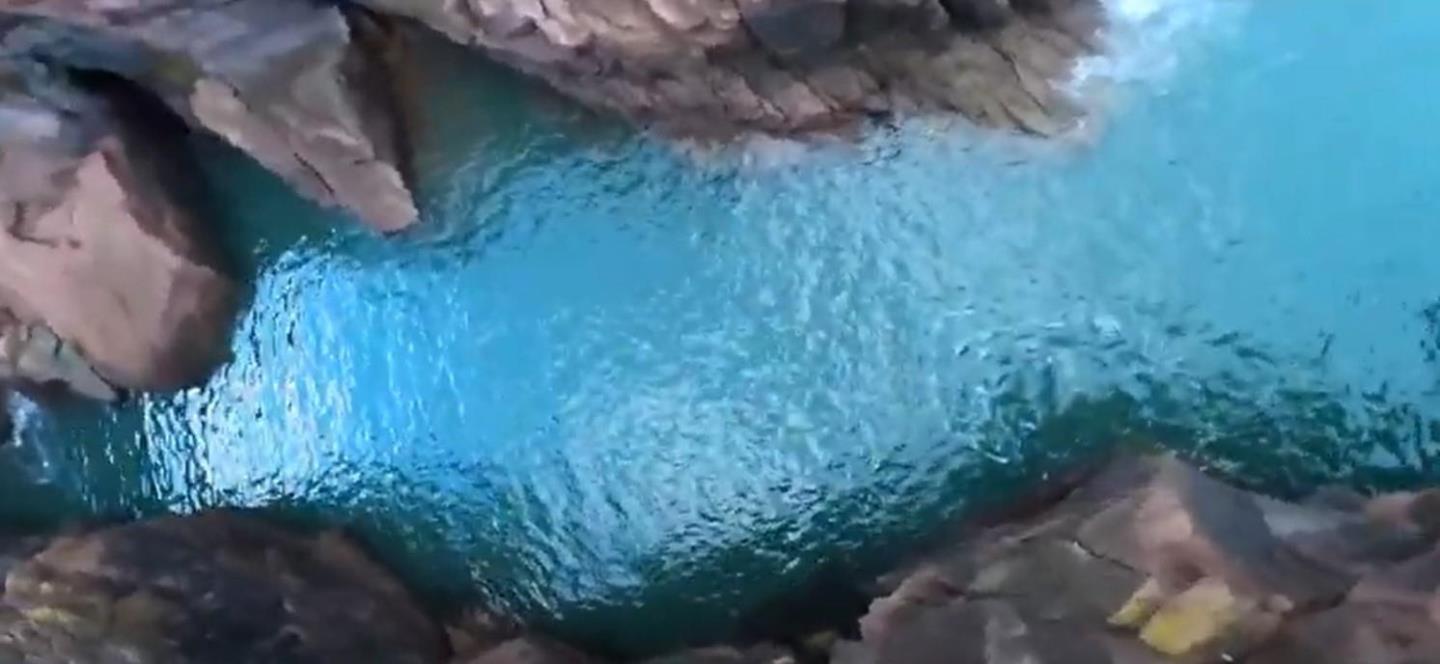
“The RNLI strongly discourages the activity of cliff jumping or ‘tombstoning’ as it is sometimes referred to.
“The risks involved can cause life changing injuries and even death.
“The activity is inherently dangerous due to water depth changes caused by tides as well as hidden, submerged items such as rocks that can cause serious injury, paralysis or death if hit.
“Our other major concern is cold water shock, the body’s reaction when suddenly submerged in any water below 15C, the water around Scotland remains at around ten degrees all year, despite seasonal rises in air temperature.”
The RNLI’s guidance on cold water shock is here
Charity swim
Lee has organised a relay swim from Arbroath to Auchmithie on August 28 to raise money for Arbroath RNLI.
He will be joined by a group of seven other cliff jumpers to take on the challenge, which may be moved to the following day if the weather is poor.
“This is to giving something back to the lifeboat,” he says. “We’ve never needed the lifeboat but they’re always there and would be the first there to help you.”
He aims to raise £500. To donate, click here.
